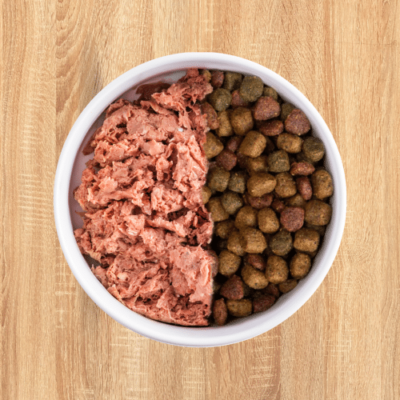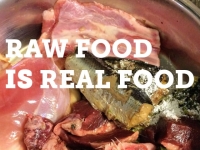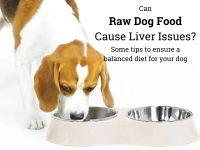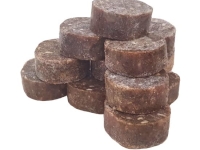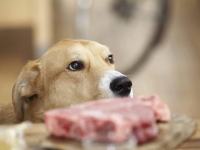In the world of dog food, the debate rages on: is raw better than kibble? As a conscientious dog owner in New Zealand, understanding the nuances of your furry friend’s diet is important—not just for their health, but also for their happiness. Finding the perfect dog food can feel overwhelming with the amount of misinformation. This guide will inform your choices.
Understanding Dog Nutrition
The Basics of Canine Nutrition
At the heart of every dog’s diet is the essential nutrients. Proteins, fats, carbohydrates, vitamins, and minerals all play a vital role in maintaining your pet’s health. A balanced diet not only fuels their metabolism but also supports their immune system, aids in digestion, and promotes a glossy coat. After all, a happy dog is a healthy dog.
The Rise of Raw Diets
Raw feeding isn’t just a passing trend; it’s a return to the primal roots of dog nutrition. As more pet owners become aware of what goes into processed foods, the popularity of raw diets has surged. With a growing community of advocates singing the praises of fresh, unprocessed ingredients, it’s a movement worth exploring.
Kibble – The Processed Alternative
What is Kibble?
Kibble, that ubiquitous staple in pet food aisles, is a form of dry dog food designed for convenience. Typically made from a blend of meat, grains, and vegetables, it’s engineered to provide a balanced diet. However, the ingredient list can often resemble a science experiment more than a meal.
The Processing of Kibble
The journey from ingredient to kibble involves high levels of processing. This method can strip away vital nutrients, leaving behind a product that may be more filler than food. The presence of artificial additives and preservatives raises eyebrows, and for good reason. What are we really feeding our pets?
The Nutritional Implications of Kibble
Research indicates that the nutritional quality of kibble can significantly impact a dog’s health. Issues such as obesity, dental problems, and even allergies have been linked to a diet primarily composed of processed foods. With the alarming rise in canine health issues, it’s time to rethink what goes into that bowl.
Raw Diets – A Return to Nature
What Constitutes a Raw Diet?
A raw diet for dogs typically includes fresh meats, organs, bones, and sometimes fruits and vegetables. It can be classified into two main categories: the BARF (Biologically Appropriate Raw Food) approach and the Whole Prey model. Both aim to mimic the natural diet of dogs, but with slightly different philosophies.
Benefits of Feeding Raw
The advantages of a raw diet are compelling. Dogs on raw diets often exhibit improved coat conditions, enhanced energy levels, and better digestion. The natural enzymes and probiotics found in raw foods can work wonders on gut health, making for a happier, healthier pooch.
Addressing Concerns About Raw Diets
Of course, transitioning to a raw diet raises valid concerns. Issues surrounding hygiene, food handling, and the risk of bacteria cannot be ignored. Additionally, ensuring a balanced raw diet is crucial to avoid nutritional deficiencies. Resources such as
this article can help shed light on potential risks.
Is Raw Truly Better?
Scientific Research and Studies
Evidence-based studies have begun to emerge, comparing the health markers of dogs fed raw diets to those on kibble. Findings suggest that raw-fed dogs may enjoy better overall health, though more research is needed to provide definitive answers.
Recent Kibble Recalls
Nestle who produces
Purina Pro Plan recalled some of their product range due to toxic levels of vitamin D in 2023 and Mars who produce <ahref=”https://www.dogfoodadvisor.com/dog-food-recalls/mars-petcare-recalls-pedigree-adult-complete/>Pedagree have also had recall product due to the potential presence of loose meta contamination.l
Owner Experiences and Testimonials
Many New Zealand dog owners have made the leap to raw feeding and report remarkable transformations in their pets. From increased vitality to improved digestion, the anecdotal evidence is compelling. However, transitioning can come with its own set of challenges.
Professional Opinions
Veterinarians often have mixed feelings about the raw versus kibble debate. While some advocate for the benefits of raw diets, they also caution against potential risks. Consulting a professional who understands your dog’s specific needs is essential before making any dietary changes.
Making the Switch
Transitioning from Kibble to Raw
Making the switch from kibble to raw doesn’t have to be daunting. A gradual transition is key—start by mixing a small amount of raw food with kibble and slowly increase the raw portion while reducing kibble. Monitor your dog’s health closely during this time, and consult with a veterinarian if you have concerns.
Considerations for New Zealand Dog Owners
New Zealand boasts a growing market for raw dog food, so sourcing quality ingredients shouldn’t pose a problem. Familiarise yourself with local suppliers and ensure they adhere to safety standards. Remember, your dog’s health is worth it.
Conclusion
As we’ve explored, the question of whether raw is better than kibble isn’t straightforward. Each diet comes with its own set of advantages and drawbacks. The key takeaway? Knowledge is power. Equip yourself with the information needed to make the best dietary choice for your furry companion. Always consider consulting with a veterinarian, and trust your instincts as a pet parent.
Call to Action
What has your experience been with raw versus kibble? We’d love to hear your thoughts and stories in the comments below. Don’t forget to subscribe for more insights into dog nutrition and health!
Additional Resources


